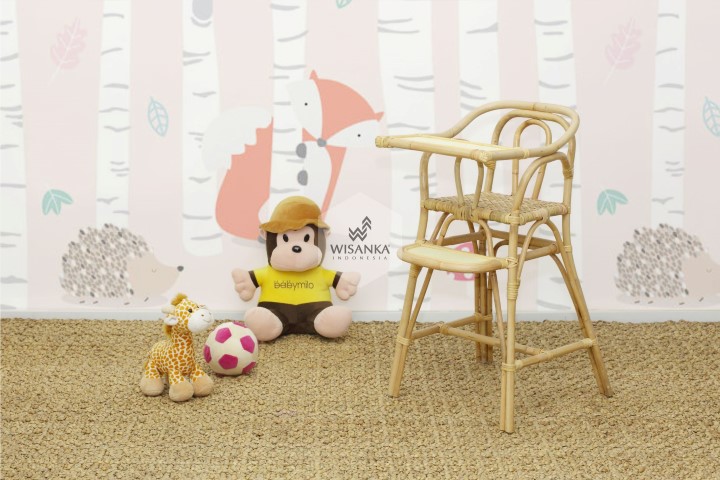Table of Contents
Rattan furniture has long been celebrated for its natural aesthetic, durability, and lightweight properties, making it a popular choice for many households. However, when it comes to families with babies and young children, safety becomes a paramount concern. This article delves into the safety aspects of rattan dining sets, providing factual insights to help parents make informed decisions.
Understanding Rattan: Natural vs. Synthetic
Rattan is a flexible plant material derived from certain types of palms found in tropical regions. It’s known for its strength and ability to be woven into various furniture designs. There are two primary types of rattan used in furniture:
1. Natural Rattan: Harvested directly from palm plants, natural rattan offers an organic look and feel. However, it can be susceptible to moisture and may develop mold in high-humidity environments.
2. Synthetic Rattan (Polyethylene Rattan): Engineered to mimic the appearance of natural rattan, synthetic rattan is typically UV-resistant and more durable against environmental factors. It’s often recommended for outdoor settings due to its resilience.
Safety Considerations for Rattan Dining Sets
When selecting a rattan dining set for a household with young children, consider the following safety aspects:
1. Material Safety:
Non-Toxic Finishes: Ensure that the rattan furniture is free from harmful chemicals and toxins. This is particularly crucial as children are prone to touching and mouthing objects.
Fire Safety Compliance: In regions like the UK, rattan furniture sold must feature a fire safety label, indicating compliance with fire safety regulations. Although rattan is fire-resistant, it’s essential to verify this certification.
2. Design and Construction:
Smooth, Rounded Edges: Opt for designs that feature smooth, rounded edges to minimize the risk of injury. Sharp corners can pose hazards to young children.
Sturdy Construction: The furniture should be stable and robust to withstand the activities of active children. Check for secure joints and a balanced weight distribution to prevent tipping.
3. Maintenance and Durability:
Resistance to Mold and Mildew: Especially in humid climates, natural rattan can be prone to mold. Synthetic rattan is generally more resistant to these issues, making it a safer choice for certain environments.
Ease of Cleaning: Children are prone to spills and messes. Furniture that can be easily cleaned will help maintain a hygienic environment.
Adherence to Safety Standards
It’s imperative to ensure that the rattan dining set complies with established safety standards. For instance, the EN 581-1 standard outlines general safety requirements for outdoor furniture, emphasizing the importance of rounded edges and the absence of sharp points. This standard also addresses the need to prevent shear and squeeze points, which can be hazardous.
In the United States, UL 4041 provides guidelines for evaluating the safety and durability of outdoor furniture. This standard assesses factors such as stability, strength, and the presence of pinch points, ensuring that the furniture is safe for use.
Expert Recommendations
According to child safety experts, when selecting furniture for homes with young children, it’s advisable to choose pieces that are free from sharp edges and are constructed from non-toxic materials. Regular maintenance, such as tightening loose joints and inspecting for wear and tear, is also crucial to ensure ongoing safety.
Rattan dining sets can be a stylish and functional addition to family homes. By paying close attention to material quality, design features, and adherence to safety standards, parents can create a dining environment that is both aesthetically pleasing and safe for their children. Regular maintenance and informed selection are key to ensuring that rattan furniture remains a safe choice for households with young ones.

